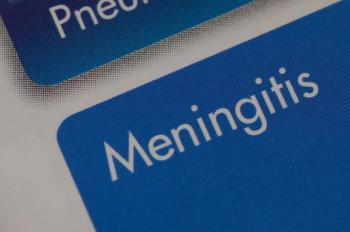
Pain management between the sexes: Is there a disparity?
Studies show that women have more severe and longer-lasting pain, men and women respond differently to pain medications, and more women are under-treated for pain.
Pain management between the sexes:
Is there a disparity?
More than 50 million Americans are living with chronic pain. Studies show that women have more severe and longer-lasting pain, men and women respond differently to pain medications, and more women are under-treated for pain. "Healthcare providers are increasingly aware of the undertreatment of pain among women," said Jeffrey Fudin, Pharm.D., clinical pharmacy specialist at the Stratton Veterans Administration Medical Center in Albany and adjunct associate professor of pharmacy practice at the Albany College of Pharmacy. He is a specialist in pain treatment.
The Joint Commission on Accreditation of Healthcare Organizations (JCAHO) and many pain experts have called the undertreatment of pain in the general population a healthcare crisis. "Research shows that women receive pain treatment that is less consistent with World Health Organization guidelines for chronic malignant pain than that experienced by males," said Russell Portenoy, M.D., director of the department of pain medicine and palliative care at Beth Israel Medical Center in New York. Portenoy, a founding member of the American Pain Society, a research organization in Glenview, Ill., has studied patterns of treatment for pain patients. "It is difficult to say with certainty what the underlying causes of disparity in pain treatment are, but studies demonstrate that disparities certainly exist," he said.
Diane E. Hoffman, director of the University of Maryland's Law and Health Care Program in Baltimore, conducted a review of the literature on differences in how men and women experience pain, how they are diagnosed, and how they are treated. She described her finding as "disturbing" and concluded that "pain strikes women more frequently and at more intense levels than it does men, but healthcare providers seem less inclined to take women's complaints of pain seriously.
Another study investigated the administration of pain medication after abdominal surgery and found that physicians prescribed less pain medication for women than for men ages 55 years or older, and that nurses administered less pain medication to women than to men ages 25-54 years. Still another study examined pain medication given to children and found that after surgery, boys received significantly more codeine than girls, and girls were more likely than boys to be given acetaminophen. Even among cancer patients, women with metastatic cancer were significantly more likely than men with the same diagnosis to be undertreated, said Hoffman.
Hoffman claims that her literature review presents several theories as to why this is the case: Healthcare providers may believe that women have a higher natural capacity to endure pain that stems from their biological role in childbirth; that women have better and more coping mechanisms to deal with pain than men; and that physicians may discount women's reports of pain as emotional or psychogenic in origin and therefore not real. Biological factors also may play a role, said Hoffman, and may include the influence of reproductive hormones; dissimilarities between men and women in the activation of stress-induced analgesia, which is the body's natural way of relieving pain caused by stressful situations; and sex-based differences in the brain and central nervous system.
Biological differences also interact with social and cultural issues to produce the observed sex differences in pain relief, according to Sherry Marts, Ph.D., scientific director for the Society for Women's Health Research in Washington, D.C., and other experts. "An increasing number of studies suggest that the fundamental biology of pain and pain relief differs between the sexes," said Marts. "These are issues of importance to pharmacists and other healthcare providers because they affect the quality of care experienced by women."
Recent studies also demonstrate that women respond differently than men to pain treatment. A seminal 1996 study by researchers at the University of California at San Francisco found that when morphinelike painkillers called kappa opioids are given to patients who have undergone surgery to remove their wisdom teeth, the drugs gave more powerful and long-lasting pain relief to women than to men. At some doses, kappa opioids were exceptionally good pain relievers in women and actually made the pain worse for men. "Understanding the cause of this discrepancy could bring better pain relief for both sexes," said Christine Miaskowski, RN, Ph.D., a professor at UCSF and current president of the American Pain Society.
A study on pain, released in March in the Proceedings of the National Academy of Sciences, reinforced the importance of examining sex-based differences in research, said Marts. Researcher Jeffrey S. Mogil, Ph.D., professor of pain studies at Montreal's McGill University, found a single gene, called the melanocortin-1 receptor (Mc1r), that regulates the effectiveness of the kappa opioid class of analgesics in female mice and humans. In his experiments, the effects of a kappa-specific analgesic were tested on mutant mice with an inactive variation of Mc1r. Although typical sex differences in analgesic effects were seen in normal mice, these differences disappeared in the mutants.
The study shows that in normal females, the Mc1r gene is involved in the brain's response to drugs that work on the kappa opioid receptor. In humans, a similar variant in the Mc1r gene is associated with having red hair and fair skin. Mogil and his colleagues from the University of Florida found that fair-skinned, red-haired women were more sensitive to the effects of a kappa opioid drug than women with darker hair and skin. These women were found, through genotyping, to have two copies of the variant Mc1r gene. As in the male mice, having the variant Mc1r did not make any difference in the response of men to the kappa-opioid drug.
Variations in pain sensitivity between men and women have also been reported in several studies, said Lena Sun, M.D., associate professor in the department of anesthesiology and pediatrics of the College of Physicians and Surgeons at Columbia University in New York. She has written about gender differences in pain sensitivity and responses to analgesics in the Journal of Gender-Specific Medicine, published by the Partnership for Gender-Specific Medicine at Columbia University in New York.
Many epidemiologic studies demonstrate that women suffer more often than men from several clinical conditions that cause discomfort, including migraine and nonmigraine headaches, facial and oral pain, back pain, and musculoskeletal pain, according to Sun. Studies show that pain sensitivity (nociception), physiologic response to pain, and the metabolism of many drugs used to treat pain differ between men and women. These findings suggest there may be gender-related differences in pain sensitivity as well as in the appropriate applicability of analgesic therapy, said Sun.
The two major classes of commonly used analgesic agents for the treatment of pain are opioids and non-steroidal anti-inflammatory drugs (NSAIDs), and studies show that women react differently to both classes. Sun pointed out that in animal studies, a greater acute pharmacologic response to morphine, a potent µ-opioid receptor agonist, was found in males compared with females. "The gender differences in morphine's analgesic properties are not related to the bioavailability of morphine, because serum concentrations of morphine and its elimination half-life from blood and brain were comparable," said Sun, "[but] appeared to be based on an enhanced central nervous system sensitivity to morphine in males compared with that in females."
NSAIDs are widely used to produce clinical responses based on their anti-inflammatory and analgesic properties, said Sun. Ibuprofen, an NSAID, has been found to reduce experimental pain in men but had no effect in women, despite similar plasma concentrations of the drug. In contrast, studies examining the anti-inflammatory actions of NSAIDs have not demonstrated any gender differences, she said.
While research by Mogil and others imply differences in brain biochemistry, the question of why painkillers work differently in men and women is not known. "Their research exemplifies the need for more studies on biological sex differences in pain perception and pain relief, both in laboratory animal experiments and in human studies," said Marts. "We believe these findings emphasize the importance of looking at sex-based differences even in animal models of research, as well as providing a good example of how animal research can translate into human biology."
Martin Sipkoff
A LIFETIME OF PAIN
Anne Nelson's nightmare began when she was 14 years old. "I came in from skateboarding and had a pain in my right heel. It began to spread a burning sensation through my leg," said Nelson, 41. "Soon it was like someone was putting hot coals along my leg, or a hot poker was being shoved in again and again."
Eight years later, with her leg beginning to look like a big purple sack, "you could barely tell I had toes." Nelson met a physician who sent her to a neurologist. His diagnosis: reflex sympathetic dystrophy (RSD), now often called complex regional pain syndrome (CRPS). "Today, CRPS is more readily described because most primary care physicians are aware it exists," said Jeffrey Fudin, Pharm.D., clinical pharmacy specialist at the Stratton Veterans Administration Medical Center, Albany. A specialist in CRPS and pain treatment, Fudin said the syndrome can be difficult to treat. "It doesn't respond to a lot of drugsnot nerve blockers, not most opioids," he said.
About six million people suffer from RSD/CPRS, according to the American Pain Society. It can affect both genders and all ages but is more common between the ages of 40 and 60 and more frequent in women.
In the initial stages, pain and swelling from the injury do not subside but intensify and often spread from the site of the injury to other parts of the limbeven to the contra-lateral limb and remote regions of the body. The skin in affected areas and deep somatic tissues are painfully sensitive to touch, often red, and abnormally warm due to alterations in regional blood flow, according to the National Institute of Neurological Disorders & Stroke. Changes in sweating patterns, hair growth, subcutaneous tissues, muscles, joints, or bones, as well as difficulty moving the joint or limb, are other hallmarks of the disorder.
Treatmentsall of which are controversial and none of which has demonstrated substantial effectivenessinclude sympathetic nerve blocks, spinal cord stimulators, systemic steroids, opioid analgesics, splints and other similar devices, the application of ice, and complementary and alternative treatment modalities, such as acupuncture, osteopathy, or hyperbaric oxygen.
Martin Sipkoff
Martin Sipkoff. Pain management between the sexes: Is there a disparity?. Drug Topics Women's Health Supplement;147:35s.
Newsletter
Pharmacy practice is always changing. Stay ahead of the curve with the Drug Topics newsletter and get the latest drug information, industry trends, and patient care tips.






































































































































